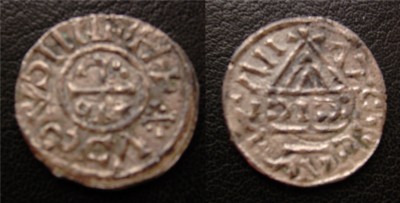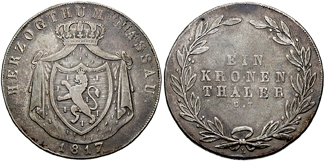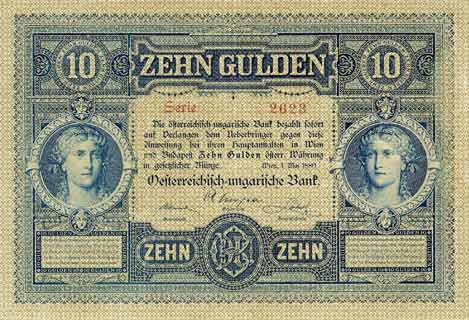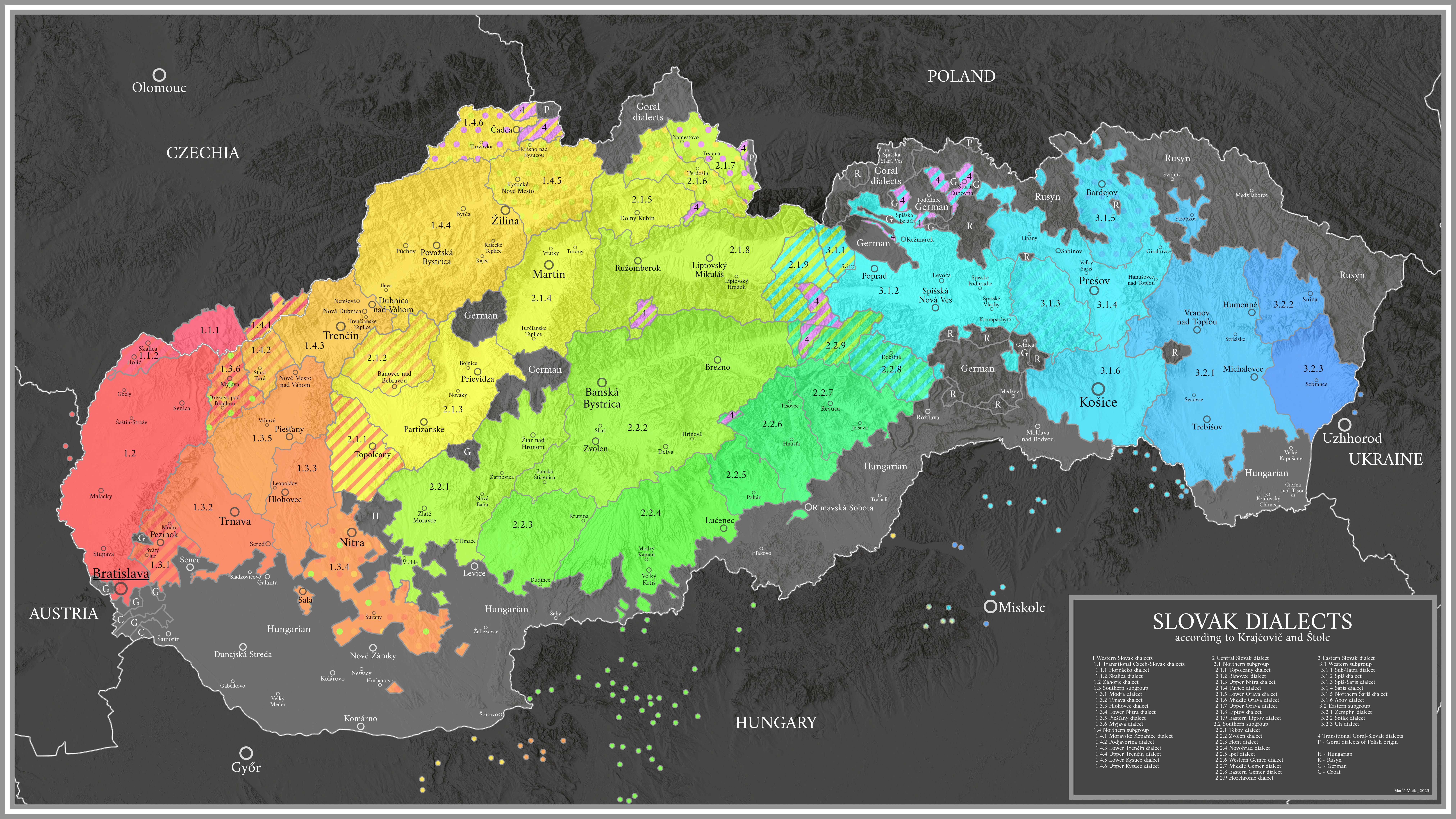|
Kreuzer
The Kreuzer (), in English usually kreutzer ( ), was a coin and unit of currency in the southern German states prior to the introduction of the German gold mark in 1871/73, and in Austria and Switzerland. After 1760 it was made of copper. In south Germany the ''kreuzer'' was typically worth 4 ''pfennigs'' and there were 60 ''kreuzers'' to a ''gulden''. Early history The ''kreuzer'' goes back to a ''groschen'' coin minted in Merano in South Tyrol in 1271 (the so-called ''Etscher Kreuzer''). Because of the double cross (German: ''Kreuz'') on the face of the coin, it was soon given the name ''Kreuzer''. It spread in the 15th and 16th centuries throughout the south of the German-speaking area. The Imperial Coinage Act of 1551 made them the unit for small silver coins. In 1559 a value of 60 ''kreuzer'' to 1 ''gulden'' had been adopted throughout the southern states of the Holy Roman Empire, but the northern German states declined to join, and used ''groschen'' instead of ''kreuze ... [...More Info...] [...Related Items...] OR: [Wikipedia] [Google] [Baidu] |
Guilder
Guilder is the English translation of the Dutch and German ''gulden'', originally shortened from Middle High German ''guldin pfenninc'' " gold penny". This was the term that became current in the southern and western parts of the Holy Roman Empire for the Fiorino d'oro (introduced in 1252). Hence, the name has often been interchangeable with ''florin'' (currency sign ''ƒ'' or ''fl.''). The guilder is also the name of several currencies used in Europe and the former colonies of the Dutch Empire. Gold guilder The guilder or gulden was the name of several gold coins used during the Holy Roman Empire. It first referred to the Italian gold florin introduced in the 13th century. It then referred to the Rhenish gulden (florenus Rheni) issued by several states of the Holy Roman Empire from the 14th century. The Rhenish gulden was issued by Trier, Cologne and Mainz in the 14th and 15th centuries. Basel minted its own ''Apfelgulden'' between 1429 and 1509. Bern and Solothurn fol ... [...More Info...] [...Related Items...] OR: [Wikipedia] [Google] [Baidu] |
Pfennig
The 'pfennig' (; . 'pfennigs' or ; symbol pf or ₰) or penny is a former German coin or note, which was the official currency from the 9th century until the introduction of the euro in 2002. While a valuable coin during the Middle Ages, it lost its value through the years and was the minor coin of the Mark currencies in the German Reich, West and East Germany, and the reunified Germany until the introduction of the euro. Pfennig was also the name of the subunit of the Danzig mark (1922–1923) and the Danzig gulden (1923–1939) in the Free City of Danzig (modern Gdańsk, Poland). Overview Name The word ''Pfennig'' (replacing the ''denarius'' or ''denarius'' as a low-denomination silver coin) can be traced back to the 8th century and also became known as the ''Penning'', ''Panni(n)g '', ''Pfenni(n)c'', ''Pfending'' and by other names, e.g. in Prussia until 1873, ''Pfenning''. The ''-ing''- or ''-inc'' suffix was used, in addition to ''-ung'', the formation o ... [...More Info...] [...Related Items...] OR: [Wikipedia] [Google] [Baidu] |
Pfennig
The 'pfennig' (; . 'pfennigs' or ; symbol pf or ₰) or penny is a former German coin or note, which was the official currency from the 9th century until the introduction of the euro in 2002. While a valuable coin during the Middle Ages, it lost its value through the years and was the minor coin of the Mark currencies in the German Reich, West and East Germany, and the reunified Germany until the introduction of the euro. Pfennig was also the name of the subunit of the Danzig mark (1922–1923) and the Danzig gulden (1923–1939) in the Free City of Danzig (modern Gdańsk, Poland). Overview Name The word ''Pfennig'' (replacing the ''denarius'' or ''denarius'' as a low-denomination silver coin) can be traced back to the 8th century and also became known as the ''Penning'', ''Panni(n)g '', ''Pfenni(n)c'', ''Pfending'' and by other names, e.g. in Prussia until 1873, ''Pfenning''. The ''-ing''- or ''-inc'' suffix was used, in addition to ''-ung'', the formation o ... [...More Info...] [...Related Items...] OR: [Wikipedia] [Google] [Baidu] |
South German Gulden
The South German Gulden was the currency of the states of southern Germany between 1754 and 1873. These states included Bavaria, Baden, Württemberg, Frankfurt and Hohenzollern. It was divided into 60 kreuzer, with each kreuzer worth 4 pfennig or 8 heller. History This specific ''Gulden'' was based on the '' Gulden'' or ''florin'' used in the Holy Roman Empire during the Late Middle Ages and Early Modern period. The ''Gulden'' first emerged as a common currency of the Holy Roman Empire after the 1524 '' Reichsmünzordnung'' in the form of the '' Guldengroschen''.Shaw (1896), p. 364: Imperial Mint Ordinance of 1524 defines a silver piece = 1 Rhenish gold gulden. On p 363: the silver equivalent of the guld gulden... received the name gulden groschen. In the succeeding centuries the ''Gulden'' was then defined as a fraction of the ''Reichsthaler'' specie or silver coin. As of 1690 the ''Gulden'' used in Southern Germany and the Austrian Empire adhered to the Leipzig standard, ... [...More Info...] [...Related Items...] OR: [Wikipedia] [Google] [Baidu] |
Austro-Hungarian Florin
The florin (german: Gulden, hu, forint, hr, forinta/florin, cs, zlatý) was the currency of the lands of the House of Habsburg between 1754 and 1892 (known as the Austrian Empire from 1804 to 1867 and the Austro-Hungarian Monarchy after 1867), when it was replaced by the Austro-Hungarian crown as part of the introduction of the gold standard. In Austria, the florin was initially divided into 60 kreutzers (german: Kreuzer, hu, krajcar, hr, krajczár cs, krejcar). The currency was decimalized in 1857, using the same names for the unit and subunit. Name The name ''Gulden'' was used on the pre-1867 Austrian banknotes and on the German language side of the post-1867 banknotes. In southern Germany, the word Gulden was the standard word for a major currency unit. After 1867 Austrian coins used the name ''Florin''. "Florin" is derived from the city of Florence, Italy where the first florins were minted, from 1252 to 1533. History The florin (German: ''Gulden'') first emerged a ... [...More Info...] [...Related Items...] OR: [Wikipedia] [Google] [Baidu] |
Conventionsthaler
The ''Conventionstaler'' or ''Konventionstaler'' ("Convention ''thaler''"), was a standard silver coin in the Austrian Empire and the southern German states of the Holy Roman Empire from the mid-18th to early 19th-centuries. Its most famous example is the Maria Theresa thaler which is still minted today. The ''Conventionsgulden'' was equivalent to a ''Conventionsthaler''. History The Austrian Empire introduced the Convention currency standard in 1754 to replace the Leipzig standard of 1690, after a drop in the gold-silver price ratio from 15 to 14.5 in the 1730s unleashed a flood of cheaper ''thalers'' defined in gold. The Leipzig standard defined the North German thaler currency unit at the ''Reichsthaler'' specie of 25.984 g, or 19.488 g fine silver. In contrast, in 1741 the gold Friedrich d'or pistole of 6.05 g fine gold was issued for 5 ''thalers''. This resulted in a cheaper Thaler Gold worth 1.21 g fine gold or 1.21 x 14.5 = 17.545 g fine silver. The ''Conventionsth ... [...More Info...] [...Related Items...] OR: [Wikipedia] [Google] [Baidu] |
Czech Language
Czech (; Czech ), historically also Bohemian (; ''lingua Bohemica'' in Latin), is a West Slavic language of the Czech–Slovak group, written in Latin script. Spoken by over 10 million people, it serves as the official language of the Czech Republic. Czech is closely related to Slovak, to the point of high mutual intelligibility, as well as to Polish to a lesser degree. Czech is a fusional language with a rich system of morphology and relatively flexible word order. Its vocabulary has been extensively influenced by Latin and German. The Czech–Slovak group developed within West Slavic in the high medieval period, and the standardization of Czech and Slovak within the Czech–Slovak dialect continuum emerged in the early modern period. In the later 18th to mid-19th century, the modern written standard became codified in the context of the Czech National Revival. The main non-standard variety, known as Common Czech, is based on the vernacular of Prague, but is now s ... [...More Info...] [...Related Items...] OR: [Wikipedia] [Google] [Baidu] |
Slovak Language
Slovak () , is a West Slavic language of the Czech–Slovak group, written in Latin script. It is part of the Indo-European language family, and is one of the Slavic languages, which are part of the larger Balto-Slavic branch. Spoken by approximately 5 million people as a native language, primarily ethnic Slovaks, it serves as the official language of Slovakia and one of the 24 official languages of the European Union. Slovak is closely related to Czech, to the point of mutual intelligibility to a very high degree, as well as Polish. Like other Slavic languages, Slovak is a fusional language with a complex system of morphology and relatively flexible word order. Its vocabulary has been extensively influenced by Latin and German and other Slavic languages. The Czech–Slovak group developed within West Slavic in the high medieval period, and the standardization of Czech and Slovak within the Czech–Slovak dialect continuum emerged in the early modern period. In ... [...More Info...] [...Related Items...] OR: [Wikipedia] [Google] [Baidu] |
Slovene Language
Slovene ( or ), or alternatively Slovenian (; or ), is a South Slavic language, a sub-branch that is part of the Balto-Slavic branch of the Indo-European language family. It is spoken by about 2.5 million speakers worldwide (excluding speakers of Kajkavian), mainly ethnic Slovenes, the majority of whom live in Slovenia, where it is the sole official language. As Slovenia is part of the European Union, Slovene is also one of its 24 official and working languages. Standard Slovene Standard Slovene is the national standard language that was formed in the 18th and 19th century, based on Upper and Lower Carniolan dialect groups, more specifically on language of Ljubljana and its adjacent areas. The Lower Carniolan dialect group was the dialect used in the 16th century by Primož Trubar for his writings, while he also used Slovene as spoken in Ljubljana, since he lived in the city for more than 20 years. It was the speech of Ljubljana that Trubar took as a foundation of ... [...More Info...] [...Related Items...] OR: [Wikipedia] [Google] [Baidu] |
Serbocroatian Language
Serbo-Croatian () – also called Serbo-Croat (), Serbo-Croat-Bosnian (SCB), Bosnian-Croatian-Serbian (BCS), and Bosnian-Croatian-Montenegrin-Serbian (BCMS) – is a South Slavic language and the primary language of Serbia, Croatia, Bosnia and Herzegovina, and Montenegro. It is a pluricentric language with four mutually intelligible Standard language, standard varieties, namely Serbian language, Serbian, Croatian language, Croatian, Bosnian language, Bosnian, and Montenegrin language, Montenegrin. South Slavic languages historically formed a dialect continuum, continuum. The turbulent history of the area, particularly due to expansion of the Ottoman Empire, resulted in a patchwork of dialectal and religious differences. Due to population migrations, Shtokavian became the most widespread dialect in the western Balkans, intruding westwards into the area previously occupied by Chakavian and Kajkavian (which further blend into Slovene language, Slovenian in the northwest). Bosniaks ... [...More Info...] [...Related Items...] OR: [Wikipedia] [Google] [Baidu] |
1690 Silver Kreuzer From Pre-unified German State Of Wurttemberg
Year 169 ( CLXIX) was a common year starting on Saturday (link will display the full calendar) of the Julian calendar. At the time, it was known as the Year of the Consulship of Senecio and Apollinaris (or, less frequently, year 922 ''Ab urbe condita''). The denomination 169 for this year has been used since the early medieval period, when the Anno Domini calendar era became the prevalent method in Europe for naming years. Events By place Roman Empire * Marcomannic Wars: Germanic tribes invade the frontiers of the Roman Empire, specifically the provinces of Raetia and Moesia. * Northern African Moors invade what is now Spain. * Marcus Aurelius becomes sole Roman Emperor upon the death of Lucius Verus. * Marcus Aurelius forces his daughter Lucilla into marriage with Claudius Pompeianus. * Galen moves back to Rome for good. China * Confucian scholars who had denounced the court eunuchs are arrested, killed or banished from the capital of Luoyang and official life dur ... [...More Info...] [...Related Items...] OR: [Wikipedia] [Google] [Baidu] |
Romanian Language
Romanian (obsolete spellings: Rumanian or Roumanian; autonym: ''limba română'' , or ''românește'', ) is the official and main language of Romania and the Republic of Moldova. As a minority language it is spoken by stable communities in the countries surrounding Romania (Bulgaria, Hungary, Serbia, and Ukraine), and by the large Romanian diaspora. In total, it is spoken by 28–29 million people as an L1+ L2, of whom 23–24 millions are native speakers. In Europe, Romanian is rated as a medium level language, occupying the tenth position among thirty-seven official languages. Romanian is part of the Eastern Romance sub-branch of Romance languages, a linguistic group that evolved from several dialects of Vulgar Latin which separated from the Western Romance languages in the course of the period from the 5th to the 8th centuries. To distinguish it within the Eastern Romance languages, in comparative linguistics it is called ''Daco-Romanian'' as opposed to its closest r ... [...More Info...] [...Related Items...] OR: [Wikipedia] [Google] [Baidu] |










